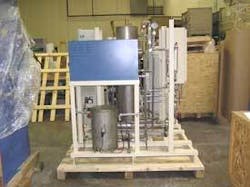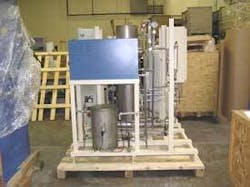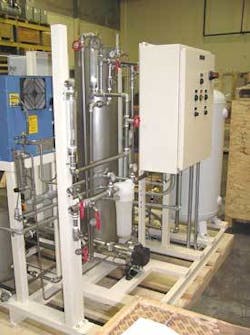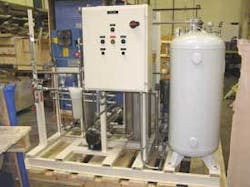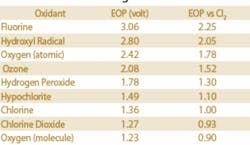Advanced Oxidation Processes: Removal of Endocrine Disrupting Compounds
by James A. Nekus
Endocrine disrupting compounds (EDCs) are emerging environmental issues that have generated concern with both scientific communities and the general public for a few years now.
The endocrine system is one of two main regulatory systems in humans and other organisms, responsible for producing hormones that are transported throughout the body via the bloodstream. EDCs are chemicals that, at certain concentrations, can disrupt the endocrine systems of organisms and wildlife in the ecosystem. EDCs can block or mimic natural estrogen or natural testosterone, or affect the thyroid function.
EDCs contain a broad range of microcontaminants including pharmaceutical drugs, ingredients in cosmetic products, food supplements, and their respective metabolites and products. Many pharmaceutical products are designed to be biologically active, so their detection in the environment has sparked concerns about their potential impact on the ecosystem and human health.
Studies have shown EDCs aren’t completely degraded or removed from conventional wastewater treatment plant processes, allowing the microcontaminants to enter the environment via treated wastewater effluents. Most water and wastewater treatments plants currently in operation have not been designed to remove EDCs, and there are no federal or state standards for such contaminants - so these compounds are becoming more and more prevalent, especially in surface waters. Surface water is widely used as water resource for drinking water. Therefore, the widespread occurrence of EDCs in surface waters may pose a problem to water utilities.
Numerous researchers have reported negative effects on the reproductive systems of aquatic wildlife in the proximity of treated wastewater effluents, and hence directly in contact with both EDCs; including developmental abnormalities, feminization of fish and human effects. Recent studies have shown a relationship between levels of EDCs in surface waters and an increase in incidents of testicular, prostate and breast cancer, as well as a decline in sperm count and quality in humans. Other potential setbacks include the evolution of antibiotic-resistant bacteria and unknown long-term effects on organisms.
Advanced oxidation processes (AOPs) have shown to be effective in removing trace amounts of EDCs, while also exhibiting exceptional disinfection properties. AOPs rely on the hydroxyl radical as the primary mechanism for destruction of organic contaminants. The hydroxyl radical is a powerful, non-selective oxidant that reacts extremely fast with various compounds within the water matrix. Oxidation strengths of most commonly used oxidants are demonstrated in Table 1.
There are many processes able to generate the hydroxyl radical, which is the most reactive oxidant commercially available. The most common AOPs are combinations of ozone (O3), hydrogen peroxide (H2O2), and ultraviolet (UV) radiation. It’s important to note that the O3/UV system is the most complete AOP, since it involves up to three separate mechanisms for hydroxyl radical generation (i.e. O3/H2O2, H2O2/UV, and O3/OH-). The photolysis of ozone by UV radiation directly yields hydrogen peroxide, which can react with either ozone or UV to yield hydroxyl radicals. The reaction of ozone and the resultant hydroxyl radicals can also form hydroperoxide ions (HO2-), which can broaden the range of pollutants that can be treated.
Many commercial and industrial operations generate wastewater effluents containing hazardous compounds that must be removed or decomposed to enable treated water to be reused within a process or discharged within permitted levels without damaging the environment. Advanced oxidation systems can offer an effective treatment method to reduce many hazardous chemical compounds to acceptable levels, without producing additional hazardous by-products. For example, hydroxyl radicals can react with chlorinated, halogenated or aromatic hydrocarbons, dyes, solvents, and negatively charged inorganics. As a result, AOPs have demonstrated successful removal of many harmful compounds (in addition to EDCs) that are unaffected by conventional treatment techniques. These compounds include complexed cyanides, N-nitrosodimethylamine (NDMA), and trichloroethylene (TCE).
Advanced oxidation processes are currently recognized by both researchers and industry professionals to be effective techniques in solving many environmental problems and one of the most promising technologies to ensure compliance with both current and future regulations.
About the Author: James A. Nekus is an applications engineer with Degremont Technologies-Ozonia, based in Elmwood Park, NJ. Contact: 201-794-3100, [email protected] or www.degremont-technologies.com
